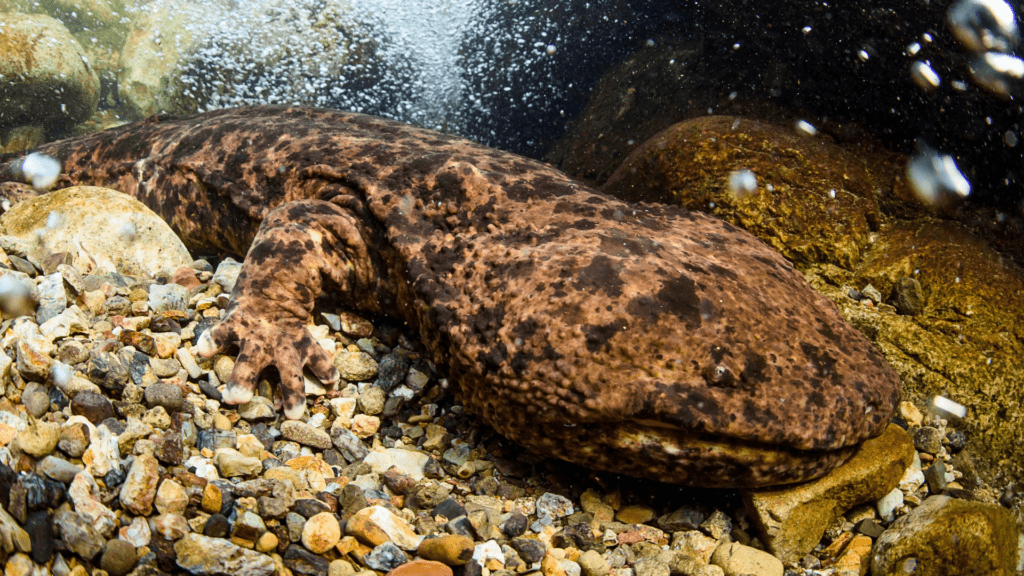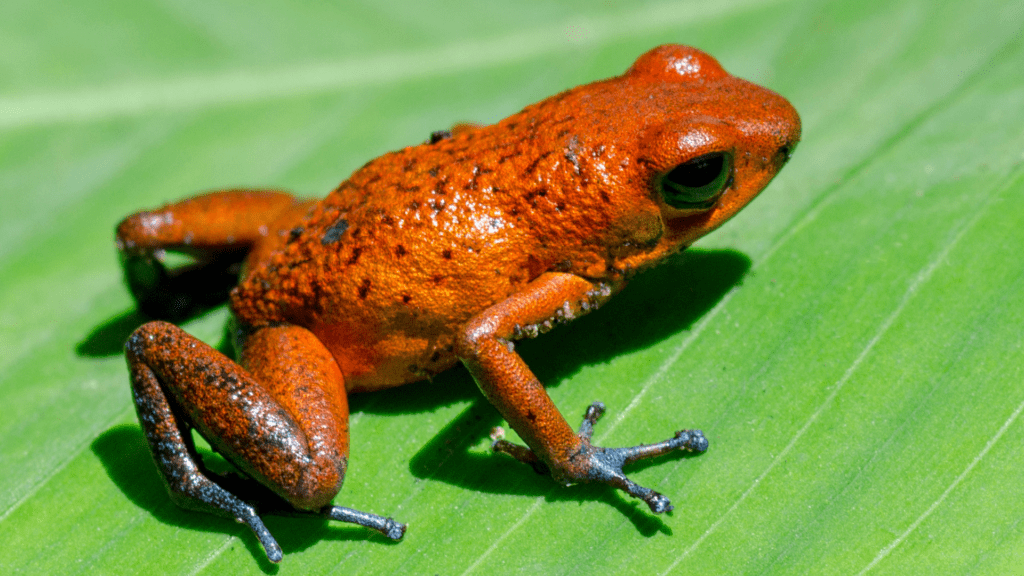hellbender, also known as the hellbender salamander or snot otter, is one of the largest salamander species in the world. This fully aquatic amphibian belongs to the genus Cryptobranchus and is closely related to the Chinese and Japanese giant salamanders. There are two recognized subspecies: the Ozark hellbender (C. a. bishopi) and the Eastern hellbender (C. a. alleganiensis). The Ozark hellbender is distinguishable by its smaller body, darkly spotted chin, and larger black patches on its back. These salamanders are primarily found in the eastern and central United States.
Scientific Classification
- Kingdom: Animalia
- Phylum: Chordata
- Class: Amphibia
- Order: Urodela
- Family: Cryptobranchidae
- Genus: Cryptobranchus
- Scientific Name: Cryptobranchus alleganiensis
What Does a Hellbender Look Like?
Size and Weight
- Length: 9.4-15.7 inches (24-40 cm) from snout to vent; total length 12-29 inches (30-74 cm).
- Weight: 3.3-5.5 lbs (1.5-2.5 kg), making it the fourth heaviest amphibian after the Chinese and Japanese giant salamanders and the giant slippery frog.
Color and Body Features
- Color: Ranges from reddish-brown, olive-brown, to grayish brown, with some individuals appearing completely black. The underbelly is paler, and some have dark mottling on their upper sides.
- Body: Flat head, beady eyes, slimy and wrinkled skin, paddle-shaped tail, and working lungs. Immature hellbenders have external gills, while adults retain only gill slits.
- Legs: Four short, powerful limbs; forelegs have four toes, hind legs have five toes.
Where Do Hellbenders Live?
Hellbenders inhabit cold, fast-moving streams from southern New York to northern Georgia. Their range includes Pennsylvania, Ohio, West Virginia, Virginia, Maryland, Illinois, Kentucky, Tennessee, Indiana, South Carolina, North Carolina, Mississippi, Alabama, Missouri, Arkansas, Kansas, and Oklahoma. They seek shelter under large, submerged boulders and avoid slow-moving waters with muddy banks or slab rock bottoms.
How Long Do Hellbenders Live?
- Captivity: Up to 29-30 years.
- Wild: Some individuals have been recorded living over 50 years.
What Do Hellbenders Eat?
- Primary Diet: Crayfish, which they consume more frequently in summer.
- Other Prey: Small fish, tadpoles, insects, and even the eggs of other hellbenders.
How Do Hellbenders Behave?
- Nocturnal: Active at night, hiding under rocks during the day.
- Solitary: Except during the breeding season.
- Territorial: Defend their chosen habitat from intruders.
- Movement: Prefer walking along stream beds rather than swimming.
How Do Hellbenders Survive in the Wild?
- Camouflage: Mottled brown skin blends with streambeds.
- Hydrodynamic Body: Flattened body reduces water resistance, aiding movement in fast currents and tight crevices.
- Sensory Adaptations: Light-sensitive cells enhance perception in low-light environments; lateral line system detects vibrations, crucial for hunting in dark waters.
- Skin Respiration: Skin folds increase oxygen absorption, allowing them to breathe through their skin.
How Do Hellbenders Reproduce?
- Breeding Season: Late August to November.
- Nesting: Males dig saucer-shaped nests under rocks/logs and aggressively guard them.
- Egg Laying: Females lay 150-200 eggs over 2-3 days; males externally fertilize them.
- Parental Care: Males guard the eggs, aerating them by rocking back and forth.
- Incubation Period: 45-70 days.
- Hatchlings: Measure 25-33 mm, lack functional limbs, and rely on yolk sacs for nutrition.
Are Hellbenders Endangered?
- Threats: Habitat destruction, pollution, siltation, migration barriers.
- IUCN Status: Near Threatened.
- US Fish and Wildlife Service: Ozark hellbender listed as Endangered.
- Conservation Efforts:
- Captive breeding programs (e.g., first successful Ozark hellbender breeding at St. Louis Zoo in 2011).
- Head-starting initiatives in Ohio and New York, raising juveniles in captivity before reintroduction into the wild.
- Designation of the Eastern hellbender as Pennsylvania’s state amphibian in 2019.
Interesting Facts
- Often mistaken for mudpuppies, which have external feathery gills.
- Ozark and Eastern hellbenders are found only in Missouri.
- Their simple lungs function primarily for buoyancy rather than respiration.
By preserving their habitats and supporting conservation programs, we can help ensure the survival of these fascinating amphibians for future generations.
References
https://stlzoo.org/animals/amphibians/salamanders-newts/eastern-hellbender
https://www.wired.com/2015/02/creature-feature-10-fun-facts-hellbenders/
https://www.nwf.org/Educational-Resources/Wildlife-Guide/Amphibians/Hellbender
https://www.outdooralabama.com/salamanders/hellbender
https://www.frontiersin.org/articles/10.3389/fevo.2018.00205/full

